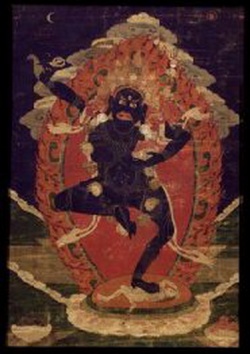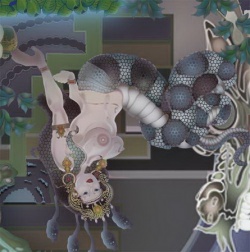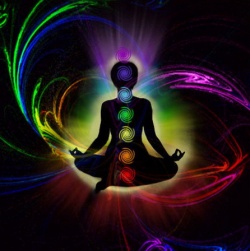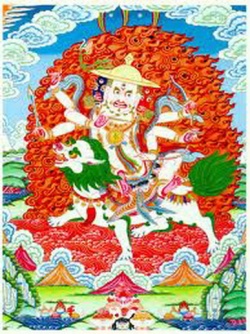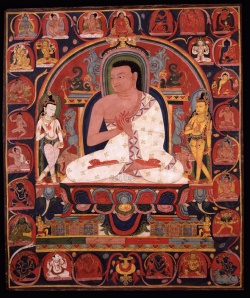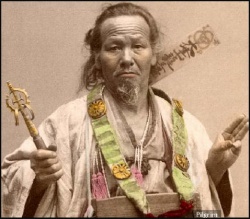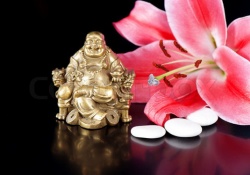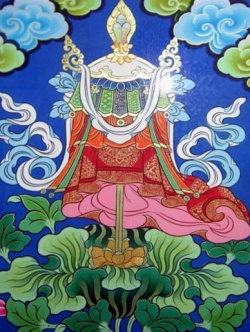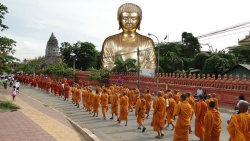The Shastra on the Door to Understanding the Hundred Dharmas
- See also :
- See also :
The Shastra on the Door to Understanding the Hundred Dharmas
Composed by Vasubandhu Bodhisattva
Translated by Tripitaka Master Xuan Zang of the Tang Dynasty.
As the World Honored One has said, “All dharmas have no self.” What are “all dharmas,” and what is meant by “having no self”? All dharmas may be generally grouped into five categories.
I. Mind Dharmas (citta-dharmah).
II. Dharmas Belonging to the Mind (chaitasika-dharmah).
III. Form Dharmas (rupa-dharmah).
IV. Activities Dharmas Non-interactive with the Mind (citta-viprayukta-samskara-dharmah).
V. Unconditioned Dharmas (asamskrita-dharmah).
They are in this sequence because the first are supreme, the second interact with the first, the third are the shadows manifest by the previous two, the fourth are separate from the positions of the previous three, and the fifth are revealed by the previous four.
The first, Mind Dharmas, include in general eight:
- the eye consciousness (cakshur-vijnana);
- the ear consciousness (shrotra-vijnana);
- the nose consciousness (ghrana-vijnana);
- the tongue consciousness (jihva-vijnana);
- the body consciousness (kaya-vijnana);
- the mind consciousness (mano-vijnana);
- the manas consciousness (manas-vijnana); and
- the alaya consciousness (alaya-vijnana).
The second, Dharmas Belonging to the Mind, include, in general, fifty-one. They are grouped into six categories:
- Five universally interactive (sarvatraga);
- Five particular states (viniyata);
- Eleven wholesome (kushala);
- Six fundamental afflictions (klesha);
- Twenty derivative afflictions (upaklesha); and,
- Four unfixed (aniyata).
One, the five universally interactive are:
1. attention (manaskara);
2. contact (sparsha);
3. feeling (vedana);
4. thinking (samjna); and,
5. deliberation (cetana).
Two, the five particular states are:
1. desire (chanda);
2. resolution (adhimoksha);
3. recollection (smriti);
4. concentration (samadhi); and,
5. judgment (prajna).
Three, the eleven wholesome dharmas are:
1. faith (shraddha);
2. vigor (virya);
3. remorse (hri);
4. shame (apatrapya);
5. absence of greed (alobha);
6. absence of anger (advesha);
7. absence of foolishness (amoha);
8. light ease (prashrabdhi);
9. non-laxness (apramada);
10. renunciation (upeksha); and,
11. non-harming (ahimsa).
Four, the six fundamental afflictions are:
1. greed (raga);
2. anger (pratigha);
3. foolishness (moha);
4. arrogance (mana);
5. doubt (vichikitsa); and,
6. improper views (drishti).
Five, the twenty derivative afflictions are:
1. wrath (krodha);
2. hatred (upanaha);
3. rage (pradasa);
4. covering (mraksha);
5. deceit (maya);
6. flattery (shathya);
7. conceit (mada);
8. harming (vihimsa);
9. jealousy (irshya);
10. stinginess (matsarya);
11. lack of remorse (ahrikya);
12. lack of shame (anapatrapya);
13. lack of faith (ashraddhaya);
14. laziness (kausidya);
15. laxness (pramada);
16. torpor (styana);
17. restlessness (auddhatya);
18. distraction (mushitasmriti);
19. improper knowledge (asamprajanya); and,
20. scatteredness (vikshepa).
Six, the four unfixed are:
1. sleep (middha);
2. regret (kaukritya);
3. investigation (vitarka); and,
4. examination (vichara).
The third is the Form Dharmas. In general, there are eleven kinds:
1. eyes (cakshus);
2. ears (shrotra);
3. nose (ghrana);
4. tongue (jihva);
5. body (kaya);
6. forms (rupa);
7. sounds (shabda);
8. smells (gandha);
9. flavors (rasa);
10. objects of touch (sprashtavya); and,
11. dharmas pertaining to form (dharmayatanikani-rupani).
The fourth is Activities Dharmas Non-interactive with the Mind. In general, there are twenty-four:
- attainment (prapti);
- life-faculty (jivitendriya);
- generic similarity (nikaya-sabhaga);
- dissimilarity (visabhaga);
- the No-thought Samadhi (asamjnisamapatti);
- the Samadhi of Extinction (nirodhasamapatti);
- the Reward of No-Thought (asamjnika);
- bodies of nouns (namakaya);
- bodies of sentences (padakaya);
- bodies of phonemes (vyanjanakaya);
- birth (jati);
- dwelling (sthiti);
- aging (jara);
- impermanence (anityata);
- revolving (pravritti);
- distinction (pratiniyama);
- interaction (yoga);
- speed (java);
- sequence (anukrama);
- time (kala);
- direction (desha);
- numeration (samkhya);
- combination (samagri); and,
- discontinuity (anyathatva).
The fifth is the Unconditioned Dharmas, of which there are, in general, six:
1. unconditioned empty space (akasha);
2. unconditioned extinction attained by selection (pratisamkhyanirodha);
3. unconditioned extinction that is unselected (apratisamkhyanirodha);
4. unconditioned unmoving extinction (aninjya);
5. unconditioned extinction of feeling and thinking (samjnavedayitanirodha); and,
6. unconditioned True Thusness (tathata).
What is meant by there being no self? There are, in general, two kinds of Non-self: one, the Non-self of Pudgala, and two, the Non-self of Dharmas.
Source
